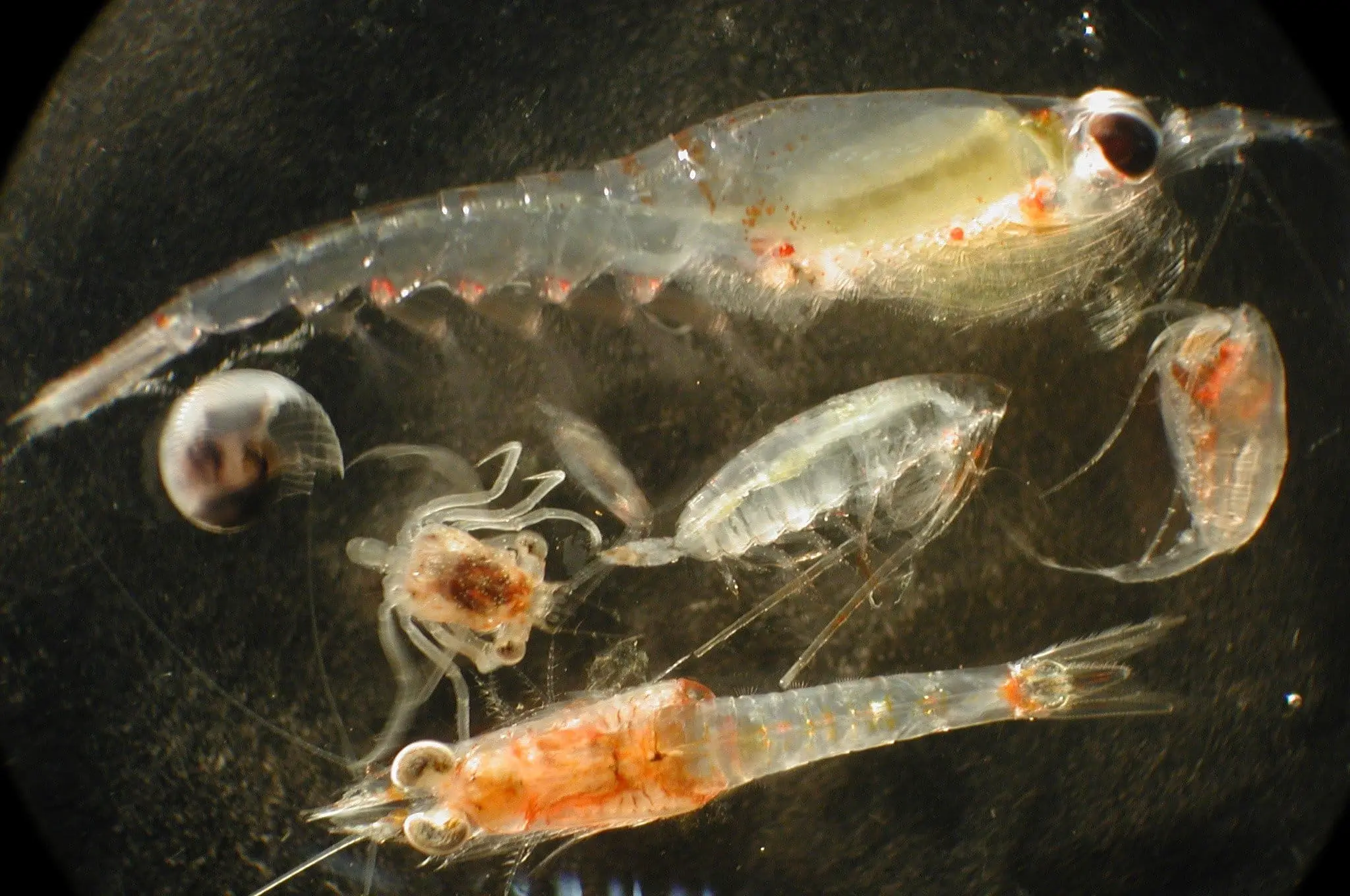
Zooplankton in Puget Sound
Zooplankton are tiny animals that float freely in the water column. They can move very short distances on their own, but are so small that they are mostly carried around by ocean currents. There are many types of zooplankton in Puget Sound, including copepods, amphipods, crab larvae, and euphausiids (krill) (Zooplankton in Puget Sound ID sheet). These animals are important food for juvenile salmon and forage fish like herring and anchovies.
Because zooplankton comprise the base of the marine food web and support healthy juvenile salmon populations, scientists need to understand what kinds of zooplankton and how many zooplankton are in Puget Sound. To meet this need, Long Live the Kings created a Puget Sound-wide zooplankton monitoring program through the collaboration of local governments, state agencies, and tribes. Researchers sample the zooplankton community twice a month during the juvenile salmon outmigration period (March through October).
Zooplankton are very sensitive to environmental change, so they are excellent indicators of ecosystem health. The metrics developed from data collected by the monitoring program are used to understand changes in the Puget Sound food web that might impact juvenile salmon and to provide guidance towards improved salmon harvest management and Puget Sound stewardship.
The zooplankton monitoring program has been extremely successful, collecting crucial data on environmental health and salmon survival indicators. For example, an environmental index developed from copepod abundance data has been closely linked to salmon survival. This new index is being used to improve forecasting models, which predict how many adult salmon will return to Puget Sound each year.
We need to continue collecting information on the Puget Sound zooplankton community over the long-term. Datasets that span many years allow researchers to understand environmental patterns and track ecosystem responses to changes in many factors like temperature, water chemistry, and pollution. Zooplankton data also show us how much food is available for juvenile salmon and whether that food is healthy for the fish. Continuing to collect Puget Sound zooplankton data is one crucial piece of successful salmon recovery. Learn more about findings on the marine food web and its effect on salmon from the Salish Sea Marine Survival Project.
Photo: Zooplankton, NOAA